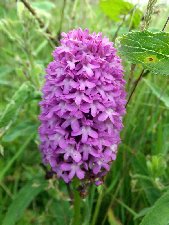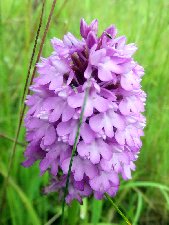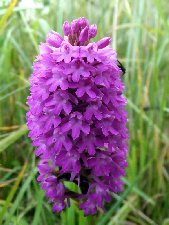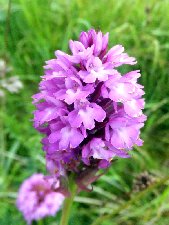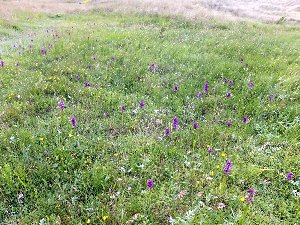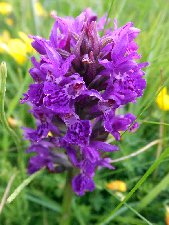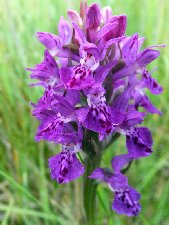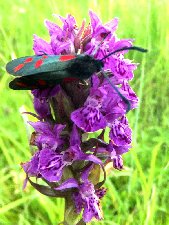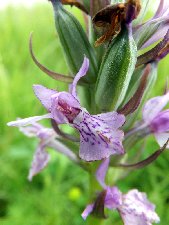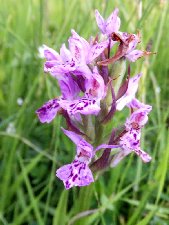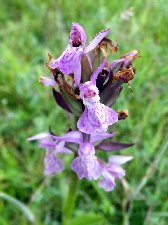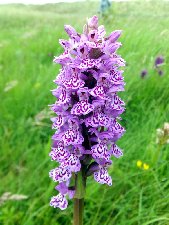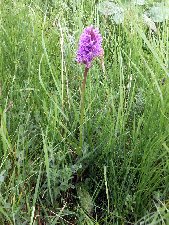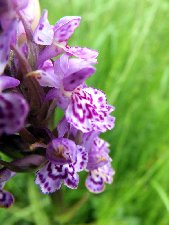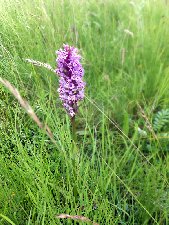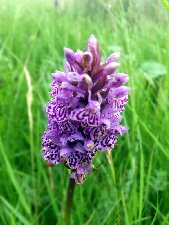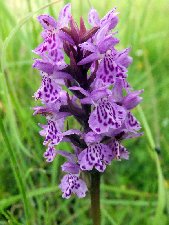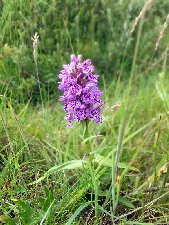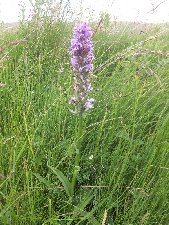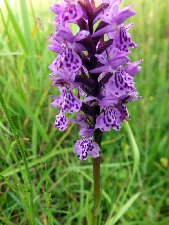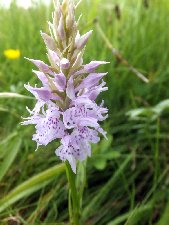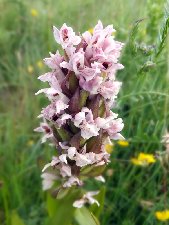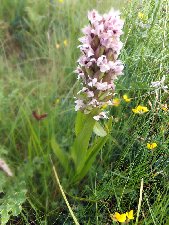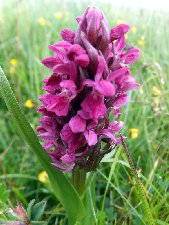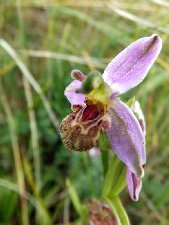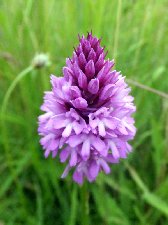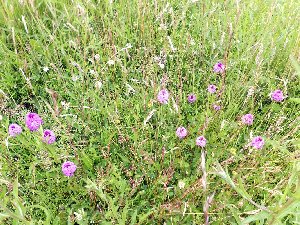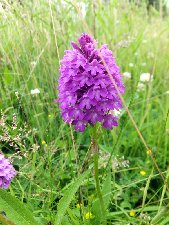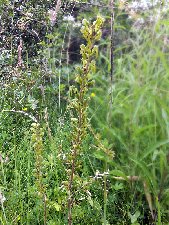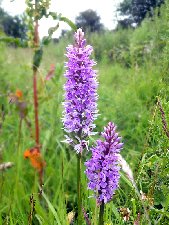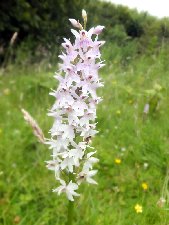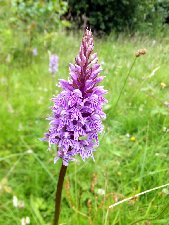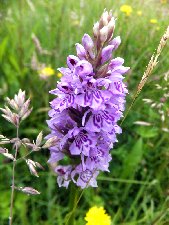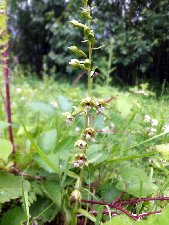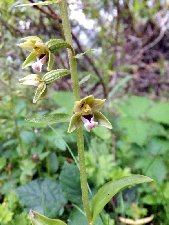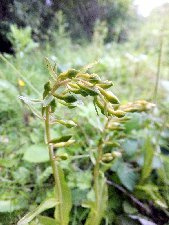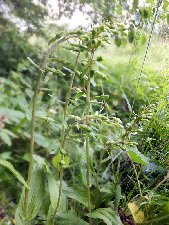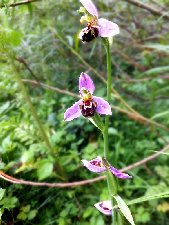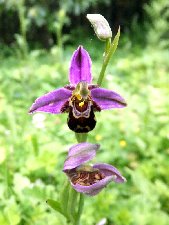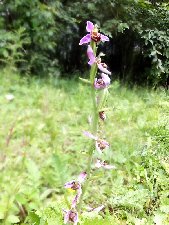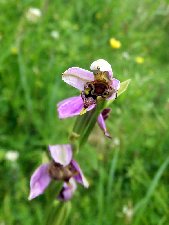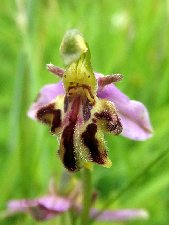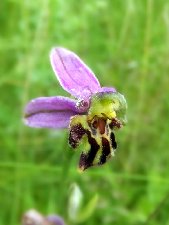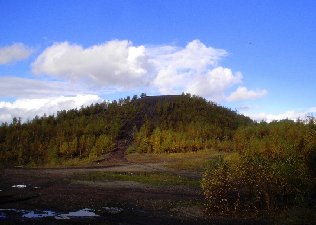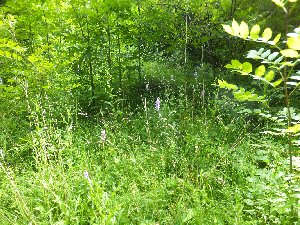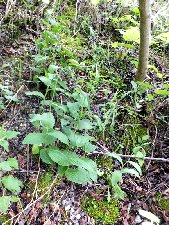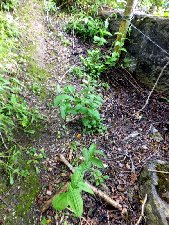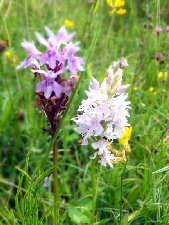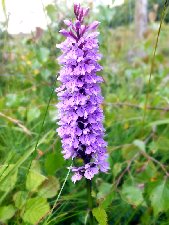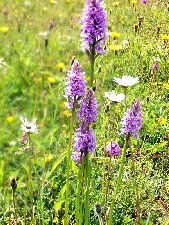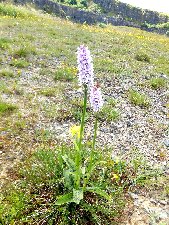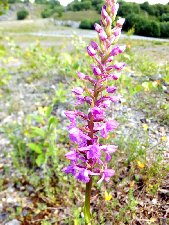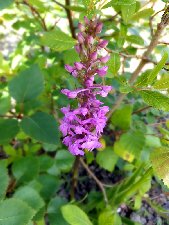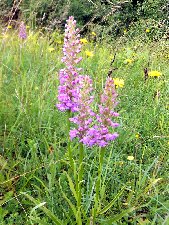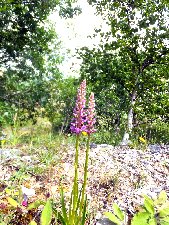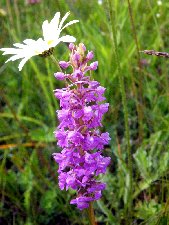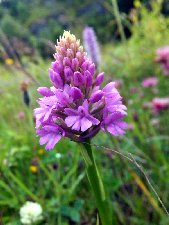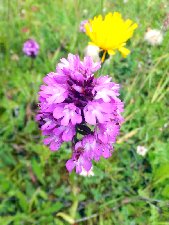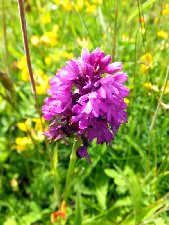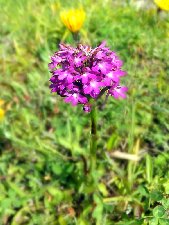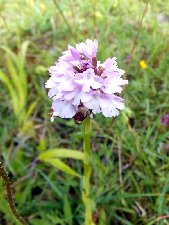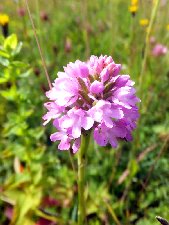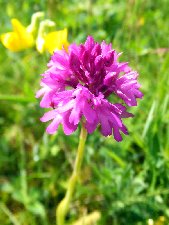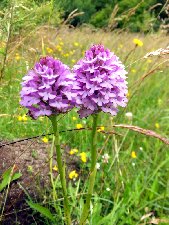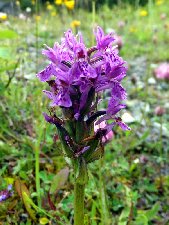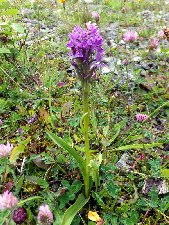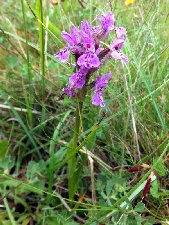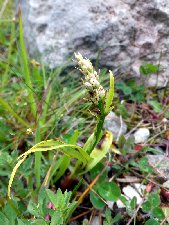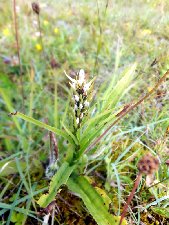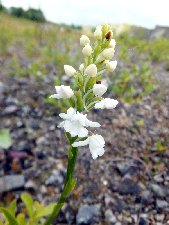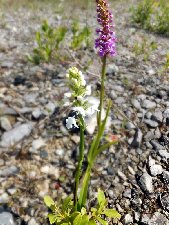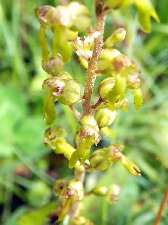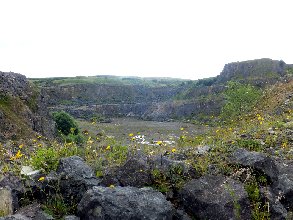|
|
|||||||||||||
|
|
|||||||||||||
 |
|
Talacre Dunes 1st July 2016 (SJ 1177284993) I have been here a few times, but not during the orchid season since I have kept proper notes and taken photographs. They lie at the north east corner of Wales just round the corner from the mouth of the Dee estuary. Talacre may be best known for its haunted lighthouse on the beach. The dunes themselves look different to other west coast dunes (Ynys Las, Morfa Harlech, Ainsdale or Sandscale) being quite reminiscent of Lindisfarne. One tip - avoid on a warm sunny weekend as hundreds make the trip for the beach and the approach road gets congested big time.
With nothing else found we follow the path into the centre of the dunes, and continue towards Prestatyn. We are met by hundreds of Northern Marsh Orchids. These are of classic appearance with deep purple flowers with bright magenta loops and dashes on the shield shaped lips. Mixed with them are sub-population of paler Dactyls, which are evidently earlier flowering; most are starting to go over. These seem to have Common Spotted Orchid colouration, but are clearly not xvenusta (the Northern Marsh x Common Spotted hybrid). For the time being these will have to remain a mystery! xlaterella (the Early Marsh x Northern Marsh hybrid) perhaps; that could explain the early flowering.
There are also two further sub-populations which resemble the var cambrensis at Eryrys a few days ago. There is a mildly spotted leaf type. It has flowers with a trilobed lip, light coloured with bright purple loops and lines. And there is a second type with unmarked leaves and similar flowers, though the markings are more dots and dashes. The latter have just started to set seed so must flower a few days earlier. I can only conclude that if they are not D. purpurella cambrensis and D. x venusta they are both part of the same population. The spotted leaf plants seem to have slightly paler flower colour providing greater contrast with the lip markings, but none of the photos show if the bracts are spotted (as described for var cambrensis).
Making our way back towards Talacre there are some Early Marsh Orchids - not a lot though. The pink(ish) flowered D. incarnata incarnata have largely gone over, but being nice robust plants they would have put on a good show. The D. incarnata coccinea are far and few, rather small, but in full flower and very showy. Finally and unexpectedly a Bee Orchid, at the end of flowering, is spotted.
Alyn Waters 4th July 2016 (SJ 3200754670) Up till now our orchid sightings here have been on the Llay side of the country park - it is actually two large areas with the River Alyn, a road, and some homes providing the separation. We did actually visit the Gwersyllt side back in 2013, taking the path from the visitor down to the river, but saw no orchids. However a report posted online praised this area and indicated that previously we had been going in the wrong direction.
A clearing in front of a copse revealed two more species which provided a bit of a conundrum. There were late flowering Bee Orchids and early flowering Dune Helleborines. The books will tell you there is no overlap between the flowering of these two species. It is only a couple of Dune Helleborines actually in flower; most will need at least a couple more weeks. Some show an unusual yellowish colouration of the flower stem and ovary, which I have not seen before. Quite a number of these were also found along a path that passed through more woodland. On one flower is a gnat, one of which must have bitten my hand, causing an allergic reaction resulting in my entire hand and fingers to swell up, itch like mad and ache!
The Bee Orchids are well established with one having nine flowers on a tall spike. The look a bit ratty being towards the end of flowering, but some look rather odd. These are not genetic variants, but seem to be developmental aberrations - they seem to be deformed and lack lip pattern symmetry; virus, aphid or weather causing damage to the buds at a critical stage perhaps. Overall there were perhaps 50 Bee Orchids here.
Gresford Colliery 8th July 2016 Gresford Colliery finally closed in 1973, and much of the site including the spoil heap has been left to nature for the past 43 years. The site lies close to both Alyn Waters and Marford Quarry and so seems a good bet for orchids. Even as we walk around I am reminded of locations with interesting orchid floras like former industrial sites Marford Quarry and Newman's Flash, while I am well aware of the so-called Young's Helleborines found at Scottish `bings'. But despite numerous wild flowers here, an extensive search reveals no orchids. Retreating to the other side of the Chester to Shrewsbury railway line, where the colliery sidings lay, the woodland habitat is very much like Marford Quarry. But it only when we come to an open grass area do we find a few Common Spotted Orchids. Minera Quarry 10th July 2016 (SJ 2540852117) We return to this limestone quarry after a couple of years following some rather slightly disappointing orchid shows in more recent years. This quarry is a massive area (some 300,000 tons of limestone was removed) and we have not covered half of it at least. Previously we have looked around the entrance and the first rock face, the woodland slopes and ledges on the right, the top of the first rock face having crossed over from Gwynfryn, the large flattened area, now grassy and straight ahead as you enter, and the farmer's path that leads off and up to the right. From here we enter the quarry proper. The surface for a couple of hundred yards in every direction is leveled with large (1 inch) limestone chippings but at the start there is now plant colonisation with quite a flora, with many Common Spotted, Marsh Fragrant and Pyramidal Orchids. The Fragrants in particular seem to have a preference for less competition growing more on the peripheries, but do not seem to mind the birch and other saplings. Could these saplings be a problem in the future, or will the orchids just colonise new areas in a plant succession?
Across the R. Sychnant by the wooden bridge is a previously unexplored area. It's more of the same plus a couple of others of note. There are a pair of Dactylorhizas, the only two marsh orchids we see today. They probably have D. purpurella sap in their veins but also have spotted leaves. Neither is very tall. And there is a oddity - I do spot another similar plant later - which seems to be a `failed' flower; a pale Common Spotted Orchid like one seen at Eryrys. Neither is in flower and perhaps neither will open properly. They have that look to them.
The track beyond is steep and a scouting mission reveals only Common Spotted lining the woodland either side. So we cross back and follow the stream. Again more Marsh Fragrants where not much else grows. Here the star of the day is found - a single pure white G. densiflora albiflora, next door to a typical example. Its scent was quite faint compared to the normal pink forms. Why so few abnormal forms? Perhaps the high numbers of plants equates with high gene flow hampering recessives and so on coming together. We only see a few Common Twayblades. We cross over again; I say cross, but there is no stream up here. All dried up. Time to
|
|
|
||||||||||||||||||||
